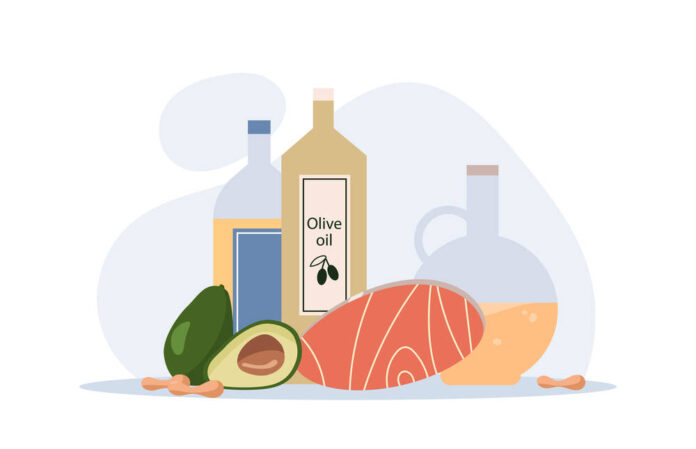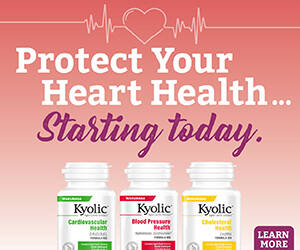
In today's modern diet, the balance of essential fatty acids, particularly Omega-3s, is often skewed because of the prevalence of processed foods rich in Omega-6 and Omega-9 fatty acids. While Omega-3s are crucial for optimal health, their counterparts, Omega-6s and Omega-9s, are abundant in many processed foods, leading to an imbalance that can negatively affect our well-being.
Understanding the importance of balancing Omega-3s with these more common omegas found in processed foods is vital to maintaining a healthy and harmonious fatty acid profile. In this blog post, we will delve into the significance of achieving this balance and explore practical ways to incorporate a more optimal ratio of these essential fatty acids into our diets for overall health and well-being.
Why do we need omegas?
First, omega-3 fatty acids are essential for various bodily functions and optimal health. These fats are vital for brain health, including cognitive and behavioral functions, and they help reduce inflammation, which is beneficial in preventing chronic diseases like heart disease and arthritis.
Omega-3 fatty acids also contribute to cardiovascular health by regulating blood clotting and vessel constriction. On the other hand, Omega-6 fatty acids, while often criticized for their pro-inflammatory effects, support skin and bone health and regulate metabolism when consumed in moderate amounts.
Omega-3 and Omega-6 fats are essential for normal development, mental health, and overall well-being. Maintaining a balanced ratio between these fatty acids is vital as they compete for the same enzymes for metabolism and the same place in cell membranes, impacting hormone regulation, nutrient absorption, and overall health.
Why is it essential to achieve a balance of omegas?
Achieving a balanced ratio of Omega-3 to other fatty acids, particularly Omega-6, is crucial for maintaining optimal health and preventing chronic diseases.
An imbalance, especially an excess of Omega-6, can lead to inflammation and various health issues such as heart disease, cholesterol problems, diabetes, arthritis, weight gain, and other related conditions. Research indicates that Western diets, which are deficient in Omega-3 fatty acids and high in Omega-6 fatty acids, can promote diseases like cardiovascular disease, inflammatory conditions, and autoimmune diseases.
Studies have shown that a lower Omega-6/Omega-3 ratio, closer to 2:1 instead of the 20:1 ratio in typical SAD (standard American diet), reduces the risks of chronic diseases like cardiovascular disease and inflammatory conditions. Maintaining a low Omega-6/Omega-3 ratio by reducing the intake of refined Omega-6 seed oils and increasing the consumption of marine Omega-3s can effectively reduce inflammation, allergies, and autoimmune reactions.
Learn more about oils to avoid
How can I achieve a better-balanced omega ratio?
To achieve a better balance of omegas, consider the following practical tips:
- Prioritize Omega-3-Rich Foods: Include fatty fish like salmon, mackerel, and sardines, as well as flaxseeds, chia seeds, walnuts, and hemp seeds in your diet regularly. Aim for at least two servings of fatty fish per week.
- Choose Cooking Oils Wisely: Opt for cooking oils with a better Omega-6 to Omega-3 ratio, such as olive or avocado. Avoid oils high in Omega-6, such as soybean and corn oil.
- Read Food Labels: Check food labels for hidden sources of Omega-6-rich oils in processed and packaged foods. Reduce consumption of processed and fast foods containing polyunsaturated vegetable oils like corn, sunflower, safflower, soy, and cottonseed oils.
- Consider Supplements: If achieving balance through diet alone is challenging due to the prevalence of Omega-6-rich processed foods, supplements containing Omega-3s like EPA and DHA may be necessary for some individuals.
- Shift Meat Consumption: If you consume red meat, opt for grass-fed beef or bison, which have a better balance of omega-6 to omega-3 fatty acids. Limit or eliminate dairy products, as they contain saturated fats and omega-6.
By incorporating these strategies into your dietary habits, you can work towards achieving a more optimal balance of omegas for improved overall health and well-being.
Try this Perfect Poached Salmon, Peaches, and Arugula Salad Recipe
How do I decide which omegas I should supplement?
To determine which omega supplements you need, consider the following guidelines:
- Choose the Right Source: Look for omega-3 supplements that are third-party tested, ideally in an ISO-17025 accredited laboratory, or certified by reputable organizations like the Global Organization for EPA and DHA Omega-3s (GOED), Friend of the Sea, or United States Pharmacopeia (USP). These certifications ensure product quality and ethical standards.
- Check EPA/DHA Levels: Ensure the supplement contains adequate amounts of EPA and DHA, the essential omega-3 fatty acids in fish. Look for at least 650 milligrams/day of EPA and DHA combined, with a minimum of 220 milligrams each.
- Consider Sustainability: To support environmental conservation efforts, opt for supplements from sustainable sources, such as small fish with short lifespans.
- Choose the Right Amount: Consider your individual needs when selecting dosing options. The Dietary Guidelines for Americans recommend 450 – 500 mg/day of EPA and DHA. Health Canada's recommendation suggests a minimum daily intake of 100 mg each of EPA and DHA. Still, they advise opting for a higher dosage, starting around 500 mg, for optimal cardiovascular and brain health. As a side note, it's worth mentioning that most naturopathic doctors advise a higher dosage, typically 1000 mg of EPA and DHA, to optimize health. Personalize your intake based on lifestyle and dietary choices to achieve optimal blood levels.
- Select the Right Form: Omega-3 supplements come in various forms, like capsules, soft gels, or liquids. For better absorption, look for free fatty acids (FFA), triglycerides (TG), reformed triglycerides (rTG), or phospholipids (PLs). Avoid ethyl esters (EE) for optimal utilization in the body.
By following these steps and considering factors like certification, EPA/DHA levels, sustainability, dosage, and form, you can choose an omega-3 supplement that best suits your needs and effectively supports your overall health.
What should I keep in mind when taking omegas?
If you have a fish allergy, you will want to consider other sources of omegas like algae oil and nuts or seeds.
Keep your omegas in the fridge or a cool, dark place to keep them fresh.
Always check with a healthcare professional when considering supplements. If you take medications, they can advise you on interactions you should avoid.
Bottom Line
Balancing your omegas more favorably with omega-3s will protect your cardiovascular health, improve your mood, and reduce brain fog. You may also notice that your skin health improves and that you experience less joint pain. Increasing your intake of omega-3s through supplementation or diet can improve your health overall.
[Editor’s Note: New Roots Herbal offers a variety of Omega 3 supplements based on different needs. You can learn more about their high-quality supplements here.]
Sources
NIH Omega-3 Fatty Acids
Omega-3 Fatty Acids: An Essential Contribution Harvard T.H. Chan School of Public Health
Simopoulos AP. The importance of the ratio of omega-6/omega-3 essential fatty acids. Biomed Pharmacother. 2002 Oct;56(8):365-79. doi: 10.1016/s0753-3322(02)00253-6. PMID: 12442909.





